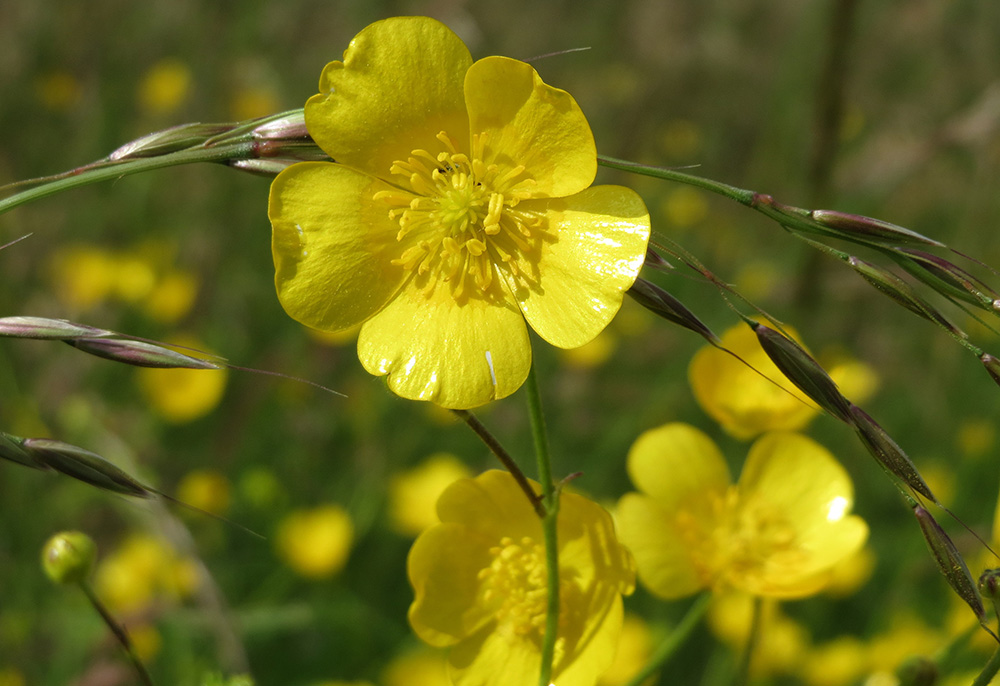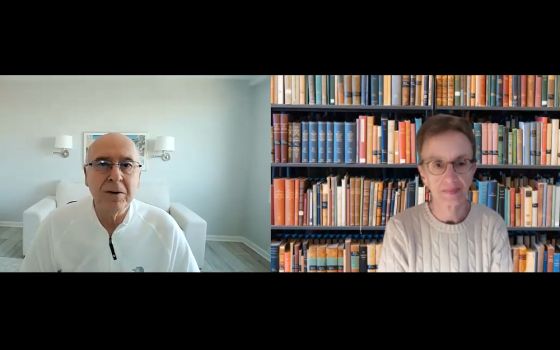
(Wikimedia Commons/AnRo0002)
One of the most remarkable people I have met along this journey of life is the late Jesuit Fr. John Haughey. His keen mind was matched by his amusing sense of humor. As senior fellows at Woodstock Theological Center, John and I spent many hours talking about the mystery of matter and the presence of God.
One time, during our conversation, he recounted how he had just finished a retreat; the highlight of the retreat was not interior prayer but staring at a buttercup flower. During his entire retreat, he stayed with this tiny little flower each day, fully present to it, being drawn into the miracle of its delicate life.
I often think of John's experience because he discovered God in the most unexpected place, the fragile, delicate petals of a buttercup flower. God is the ultimate depth of everything that exists, Paul Tillich wrote, but we must learn to see. Jesus repeatedly asked his disciples, What do you see? For the reign of God is here and now. To the unbelievers he lamented, "It is because you say you see that your blindness remains" (John 9:41).
Pierre Teilhard de Chardin, the famous Jesuit scientist, was also a strong advocate of vision. "To see and to make others see" was the heart of his masterpiece, The Human Phenomenon. "The whole of life lies in that verb," he said.
What kind of seeing is it that reveals not only the surfaces of things, but also their within? Here is the question that distinguishes physical sight from spiritual sight, as Antoine de Saint-Éxupery wrote in The Little Prince: "It is only with the heart that one sees rightly, what is essential is invisible to the physical eye."
Gospel vision calls us to see the incredible: This whole, crazy and chaotic world is God-filled.
St. Francis of Assisi saw with his heart. He was a nature mystic whose inner eye transformed the world into the living body of Christ. When he beheld two twigs in the form of a cross, the passion of Christ was awakened in him; when he saw an earthworm along the road, he thought of Psalm 22:6, "I am a worm and no man, despised by all."
And when he became physically blind at the end of his life and could no longer tolerate the light of day, he saw the world solely from within, a world radiant with the splendor of God, expressed in Brother Sun, Sister Moon and Sister Mother Earth.
Gospel vision calls us to see the incredible: This whole, crazy and chaotic world is God-filled. The Christian life is learning to see what is already present and to unite with what one sees; this is the sacramental life. Michael Himes states that a sacrament is anything that awakens, enlivens and expands the imagination, opens the vision of the inner eye and enriches the sensitivity of any human being.
We are invited to see the invisible in the visible, to experience, notice, accept and celebrate every miracle of life, whether a tiny twig, a small flower, or a burly human, because everything is bursting with divine life. "The world is charged with the grandeur of God," as Gerard Manley Hopkins wrote, but if we are distracted, inattentive or cut off from the pulsing energies of life, we will miss the miracle.
Scientists today speak of entanglement, the inextricable action of everything on everything else. The role of consciousness is fundamental to realizing our interdependence because entanglement suggests every aspect of matter has agency. It is not simply the human looking at the buttercup, but the buttercup is looking at the human; we humans and buttercups are part of a cosmic whole. When we look at a tree or a flower, we are also looking at ourselves, for we are made of the same stuff that makes buttercups and acorns uniquely fragile and beautiful.
Advertisement
What binds all life together? Teilhard said that love forms the physical structure of the universe; love is the core energy of cosmic life. Love unites and draws observer and observed into a union of life, open to new life. Only a God of everlasting love could do something this crazy. Only a God drunk with love, as the Pseudo-Dionysius wrote, could relinquish the power of divinity and become small and fragile in a tiny, yellow flower.
It is this letting go of divine power that allows God to dwell in unexpected places, empowering every aspect of life to become something more in love, showing us that frail, fragile and weak matter has the power to be transformed into something eternal. "There is nothing profane below," Teilhard wrote, "for those who know how to see."
All of creation is pregnant with the infinite love of God; God is forever loving the world with all that God is. Since we cannot conceive of God apart from material existence, the whole of life in this Big Bang universe is incarnational; it is thoroughly Christic. God is dynamically engaged in every aspect of physical life, from the beginning, drawing all through love into the fullness of being.
This is the good news of the Easter message. God is not dead or absent or retired; God is active and alive, here and now, in the very stuff we call matter. Matter matters to God, but we have to disconnect from our devices, get out of our cubbyholes, and open our eyes to see. God is doing new things and we are invited into this dance of ever-flowing life.
Easter tells us that it is not we alone who are saved but God is saved from a lonely life of divine power. God is the great cosmic adventurer who offers a divine invitation to rise from the dead and join in the exuberant celebration of life for, indeed, Christ is risen!








